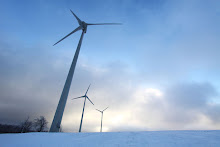In electricity grids, demand response (DR) is similar to dynamic demand mechanisms to manage customer consumption of electricity in response to supply conditions, for example, having electricity customers reduce their consumption at critical times or in response to market prices. The difference is that demand response mechanisms respond to explicit requests to shut off, whereas dynamic demand devices passively shut off when stress in the grid is sensed. Demand response can involve actually curtailing power used or by starting on site generation, which may or may not be connected in parallel with the grid. This is a quite different concept from energy efficiency, which means using less power to perform the same tasks, on a continuous basis or whenever that task is performed. At the same time, demand response is a component of smart energy demand, which also includes energy efficiency, home and building energy management, distributed renewable resources, and electric vehicle charging.
Current demand response schemes are implemented with large and small commercial as well as residential customers, often through the use of dedicated control systems to shed loads in response to a request by a utility or market price conditions. Services (lights, machines, air conditioning) are reduced according to a preplanned load prioritization scheme during the critical time frames. An alternative to load shedding is on-site generation of electricity to supplement the power grid. Under conditions of tight electricity supply, demand response can significantly decrease the peak price and, in general, electricity price volatility.
Demand response is generally used to refer to mechanisms used to encourage consumers to reduce demand, thereby reducing the peak demand for electricity. Since electrical generation and transmission systems are generally sized to correspond to peak demand (plus margin for forecasting error and unforeseen events), lowering peak demand reduces overall plant and capital cost requirements. Depending on the configuration of generation capacity, however, demand response may also be used to increase demand (load) at times of high production and low demand. Some systems may thereby encourage energy storage to arbitrage between periods of low and high demand (or low and high prices).
There are two types of demand response - emergency demand response and economic demand response. Emergency demand response is primarily needed to avoid outages. Economic demand response is used to help utilities manage daily system peaks.
skip to main |
skip to sidebar
Energy Forecast & Updates
